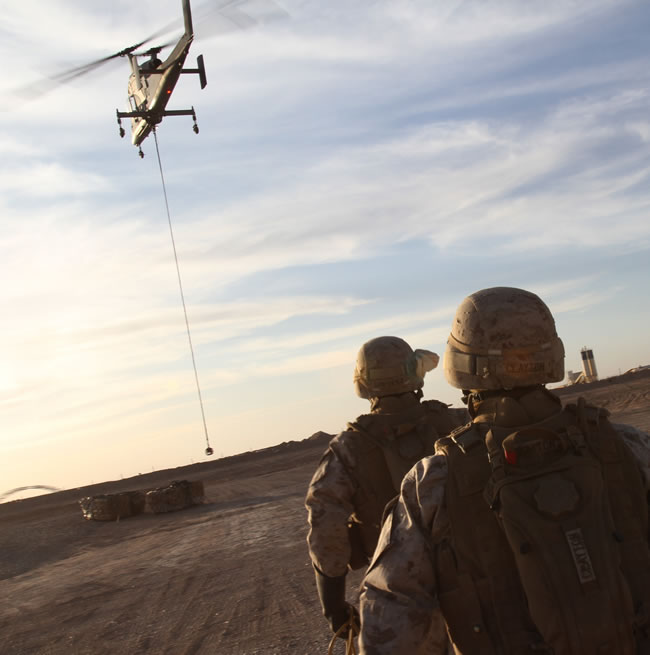
One of two K-MAX unmanned helicopters supplying the U.S. Marine Corps in Afghanistan has crashed June 5th at Camp Leatherneck near Kandahar. The helicopter crashed at a landing zone when it was operating an autonomous resupply mission, as it was delivering supplies at the remote site. The official announcement said that at no time soldiers’ lives were at danger by the drone. Defense-Update reports.
The two helicopters were operating in Afghanistan since November 2011, hauling over 6,000 tons of supply and equipment supporting Marine outposts in the area, avoiding the risks of IED and RPG attacks on the long desert roads. The official announcement did not mention the cause of the accident. The K-MAX can operate by user command (remotely controlled) or autonomously, relying on on-board autopilot, mission computer and on-board navigation system.
Modern asymmetric warfare has exposed war machines to new kinds of hazards and countermeasures, among them rudimentary, and highly sophisticated electronic countermeasures, assembled by subject experts using hardware acquired by foreign sponsors seeking to test and evaluate the effectiveness of their equipment against western military hardware. Drones, particularly those relying on autonomous GPS navigation based systems are becoming primary target for electronic attack, as manifested by the Iranian downing of the U.S. top secret RQ-170 Sentinel and several Scan-Eagle drones. Some reports attributed the attack to a combination of electronic warfare and cyberwarfare, after security at the U.S. based command and control center was compromised by a keylogger bot planted in computers operating at the base that operated the drones. Iranians EW units also managed to hack the drone, using deceptive signals that brought it to descend and land at the wrong destination. In another incident in South Korea, North Korean GPS jamming caused a Schiebel S-100 Camcopter to crash, killing one of the company technicians. It is therefore possible that the crash of the K-MAX in Afghanistan could be attributed to hostile actions, particularly when flying autonomously.
The vulnerability of drones’ analog datalinks is well known and documented secret, that has caused the loss of lives of many service members in different armies. It is essential to secure the command links and navigation systems against hacking and deception. otherwise, weaponized drone could be turned by insurgents against the armies that operate them.
















